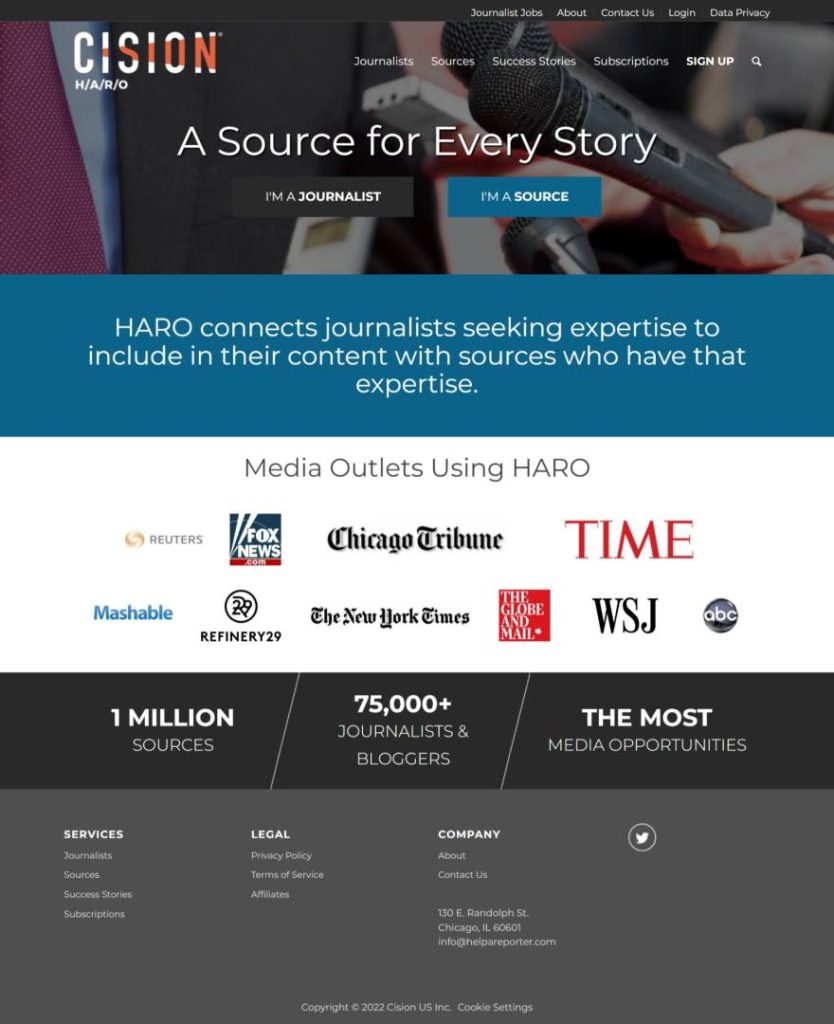
In the world of marketing, SEO is probably one of the most mystifying aspects of the practice that usually breeds confusion, uncertainty, and a sense of intangibility. However, it is also one of the most effective methods for generating organic rankings and enabling search engine discoverability. This dichotomy is exactly why SEO is one of the most misunderstood digital marketing tactics and one which often involves many misconceptions.
Most marketers and business owners with experience using SEO know that certain key strategies work well to help them rank higher for certain keywords, including keyword research, quality content, technical optimization, and website speed. However, the more you learn about its tricks of the trade, the more you will find that SEO has many layers to uncover that expose insights and understanding of the craft as truly highly creative. It only depends on how deep you want to engage with SEO and your patience level with SEO’s notoriously slow results!
So, without further ado, here are some of my 5 top out-of-the-box SEO tactics that actually work and that will help you create plenty of traction with a very good ROI in terms of time, energy, and resources! But before I get to the list, I’d first like to clarify why SEO takes so long and a few ways you can shorten the process.
Why Does SEO Take So Long?
The shortest answer to the question of why SEO takes so long is simply because it is a comparative system that takes into account many factors that signal relevance, quality, and authority to search engine bots. What this means is that SEO is a long-term game of designing, building, and decorating your home, or rather, your website. It looks to brand legacy and organic traffic generation for years to come. Therefore, it is a slow process that uses creativity, technicality, and analysis to strategize, optimize, and adjust.
This is precisely why you shouldn’t use SEO for quick sales outcomes that can be targeted with paid ads and email marketing campaigns. SEO investment can be related to real estate investing in that both have a long-term focus that entails building up an asset so that it is appealing to potential clients, and then waiting for years to see a return on its investment. Because of wear and tear (technical difficulties), there are many repairs to be done over time, but all of this is worth it because rental income will be coming in for many years to come.
Viewing SEO akin to real estate investment is very helpful in terms of putting a perspective around your expectations. When you see it as an asset your build over time that will not be profitable for some time but that will help you attract leads for years to come, you will be able to structure your marketing strategy around realistic expectations.
Here are just a few reasons why SEO takes so long:
- Website Domain Age
- Website Authority (Link Building)
- Site Design and Infrastructure
- Content Strategy and Keyword Difficulty
- Your Niche and Level of Competition
- Content Quality and Quantity
- Social Engagement
- Budget and Investment in SEO
- Technical Errors and Penalties
Inevitably, the best way to expedite the SEO process is to take care of your technical errors and website speed first, which will be fairly quick compared to content analysis and revamping. Then, you can look at your Google Console analytics and figure out if your content has been indexed, and if not, what issues are preventing it from being searchable. And lastly, when you have a bit more time on your hands, you can do a content audit (by using an SEO research tool or hiring a marketing agency to help you) to see which 3 articles are performing the best and which are performing the worst.
Both of these scenarios will prompt you to rewrite the content that will make your top content perform even better (you can get clues on how to go about it by researching the top content for your keyword phrase) and your least-performing content rank.
With the former, it is important to concentrate on answering more of the questions users usually ask about your topics (you can find out more about this on the “People Also Ask” section of Google Search), while for the latter, you may want to invest in rewriting the content all-together so that you target an easier keyword and provide quality content around your chosen topic.

And another related but less time-consuming SEO tactic is to keep your main navigation pages and blog content updated often. Updating your content often signals to search engine bots that they should re-crawl your pages and recalibrate them in terms of SEO leverage. By adding more helpful and optimized content to your pages, you can increase your rankings faster than by creating new content from scratch.
Just by following the suggestions above, you can increase your SEO rankings and traffic much quicker and easier than through the traditional means of keyword research, content planning, and content writing.
Why Invest in SEO
Besides its technical, SEO benefits, there are many reasons to choose to invest in SEO, most notably because SEO is based on creating and optimizing long-form content that will bring value to users for years to come. From a branding perspective, content is the most effective marketing tool to showcase your business’s authority and trustworthiness, since it offers value to educate and nurture your potential customers.
Without this long-form “hook,” potential buyers only have testimonials to evaluate and gauge a business’s success rates and differentiation from other competitors. But, this only works to a certain extent.
In fact, the more signals of trust and authority you provide in your overall content and marketing, the more likely you are to lower your leads’ levels of hesitation and get them to take the leap with your services. Inevitably, content is the only way your potential customers can get to know you and which can lead to long-term customer loyalty.
Here are just a few reasons why investing in SEO is a must in terms of business growth and branding:
- 90.63% of pages get no organic search traffic from Google. (Ahrefs)
- 61% of B2B marketers stated that SEO and organic traffic generate more leads than any other marketing initiative. (Hubspot)
- 70% of online marketers say that SEO is better than PPC for generating sales. (Hubspot)
- 75% of people never scroll past the first page of search engines. (Hubspot)
- 66% of people perform some type of online research before making a purchase online. (Semrush)
- Leads from search engines have a 14.6% close rate, while outbound leads (ex. cold-calling, direct mail, etc.) have a 1.7% close rate. (Optin Monster)
- 86% of people ignore paid banner ads, choosing to only click on organic search results. (User Guiding)
- 92.96% of global traffic comes from Google search, Google Images, and Google Maps. (Sparktoro)
- SEO drives 1000%+ more traffic than organic social media. (BrightEdge)
- 69.7% of search queries contain four words or more. (Ahrefs)
Powerful SEO Tactics That Really Work
Create Infographics
What is an infographic? Simply put, it is an informational image that showcases statistics, information, or knowledge on a certain topic through visual features and intuitive user experience. Institutions and businesses use infographics to portray their expertise on specific topics by harnessing the power of image psychology to get potential customers to find value in the collateral. This leads to greater brand awareness and an increase in clickthrough rates to the business’s content and website.

Using infographics is the “it” visual content for businesses looking to share their research and knowledge with the public, and here are just a few reasons why:
- Well-designed infographics are 30 times more likely to be read than text-based articles. (SMA Marketing)
- Approximately 65% of brands use infographics in their content marketing strategy. (Single Grain)
- Some marketing agencies charge around $2,000 for an infographic. (Copy Press)
The reason infographics are so important for SEO is that they present a ripe opportunity for a business to receive many backlinks from other content creators that find the information useful. This could not only help to elevate your domain authority, but these infographics will expose your brand to the content creators’ audiences and drive them directly to your website!
When creating an infographic, it is important to make it visually appealing, have a target audience in mind, ensure it is statistically correct, and that it is capable of delivering a powerful message about a topic. But most of all, you’ll have to ensure that it is SEO optimized. You can do so by following these steps:
Here is how the whole process would take place:
- Choose a headline for your infographic, which will provide you with ideas for the best keyphrases to use to name your infographic
- Using an SEO keyword tool, research potential keywords to determine which keyword has the best potential to rank high
- Name your infographic by including the SEO keyword in the title
- Include this name or a related name (which includes the SEO keyword) in your alt tag title
Once your infographic is SEO optimized and published, keep track of how it performs by checking the level of traffic and the number of backlinks it receives. A good way to make your infographic go viral is to share it on social media or to send it to influencers in your industry to share in their content (by giving you a backlink).
Include Multiple Media Types in Your Content
SEO bots love media-rich content – be that videos, images, infographics, audio, or gifs. What they reward even more is using various mixed media in each piece of content. One reason for this is that various media formats attract curiosity and engagement, which keeps users on your page for longer. This longer read and engagement time – especially with videos – helps signal to search engines that your content is quality enough for readers to appreciate, which is one important factor when it comes to keyword rankings and SEO.
According to Moz, the most popular types of content that work best for SEO are blog posts, short-form evergreen articles, photo and visual galleries, info-rich lists, interactive tools (like quizzes, calculators, and more), multi-page guides, infographics, videos, formal research documents (in a form of powerpoints and pdfs). Knowing this, how would you know which format is the most ideal for your content?

Here are just a few questions to consider when thinking of which media format to use in your content:
- Who is your target audience for the piece of content you’re preparing? Younger generations prefer video over text, so depending on your target demographic, you can choose to present your information in a way that would most align with your target audience.
- What is the searcher’s intent? Is it to learn something new, to compare products for purchase, or to learn more about your brand out of curiosity? When you know your target audience’s search intent, it will be easier to create content that is customized to it.
- What is already ranking for the keyphrases of your content? If videos and articles seem popular, you can always combine these formats together and see how you can create a competitive advantage with your content.
Strategize and Execute an Internal Linking Structure
One of the main reasons quality content doesn’t get indexed on Google or doesn’t perform as well as it should is that it doesn’t have a quality internal linking structure that signals to search engine bots what the content is about and how it relates to the rest of the content on a website.
What an internal linking strategy does is make it easier for search engine algorithms to recognize “relationship value” between every piece of content, acting as a thread that connects content that is topically related. When a website has an adequate internal linking structure, all pages lead to other pages, providing a network of navigation pathways that bots scan to learn more about the architecture and informational hierarchy of a website.
Content with internal links is also capable of providing its rank value to those pages, boosting their importance and increasing their rank. In the same way backlinks work to provide domain authority value from one website to another based on association, internal pages with the highest value have the potential to help other internal pages rank better through association.
The trick is to group content according to relevant topics that are truly helpful to readers. This clustering will overall benefit your website crawlability, indexing, and rankings!
Overall, internal linking is one of the most important SEO tactics, but usually, it is not prioritized or used correctly. It is one of the easiest ways to build a web page’s authority and use “link equity” to strengthen content ranking.

Look for 5 Year Trends in Your Industry and Plan Content Around Them
Since long-form content is evergreen, the content you publish today may have a long shelf-life and could even peak in popularity in years to come. That is why it is to every business’s advantage to plan for future industry trends instead of doing what everyone else is doing – which is meeting short-term fads that have a very short shelf-life. Content that is created to attract leads today may not be relevant content a year from now, requiring you to forgo its investment or to spend time and resources rewriting it.
This is not to say that you shouldn’t use guides that include years, current statistics, or current news if they are key to your overall authority-building and content strategy. If you are a local business, perhaps this would be a good way to make yourself more relevant to your audience that is anticipating a big event or a holiday.
It is absolutely advantageous to include more timely content when it is warranted. However, the bulk of your content strategy should center around writing evergreen pieces whose information can be relevant years from now. That way, your content has a chance of attracting leads for years to come without necessitating a complete overhaul.
A great way to get started is to research your industry trends. A free and useful tool to help you research is Google Trends, which can show searchers particular search patterns (statistics) for a specific keyphrase during a specific time frame, in a particular place, or other factors.
By looking at yearly patterns of search phrases that are most associated with your business and industry, you can analyze which trends are gaining in popularity and which are becoming less popular. When you know your own industry’s trajectory and gain more insight into consumer trends, you can easily plan your yearly content to align with these prognostics.
By focusing on future trends, not only will your content stand out but it will speak to the needs that most readers will have years down the line. And whenever these new trends explode, guess who will be at the forefront of Google search results meeting these informational demands?
When you focus on evergreen content, your return on investment for content will be more lucrative and impactful and will bring more traffic to your site over time than if you simply focused on fad-driven content that would be irrelevant by the next season.
Use HARO to Create Backlinks
What is HARO, you might ask? HARO is a relatively new platform that helps to connect reporters and experts in a specific profession or field so that they can mutually support each other. It stands for “Help A Reporter Out” and works in two ways: it provides reporters with the information they need for their report publications, while it helps professionals and business owners build their authority and visibility by being profiled.
The reason many business owners choose to use HARO as one of the best SEO tactics to help grow their businesses online is that by being profiled in various niche publications, they receive plenty of publicity and very quality backlinks!

You can sign-up to get free daily HARO journalist requests in your niche, and once you get them through your email, you’ll be able to search through to find a request or a few that you could answer. And although HARO sounds too good to be true and a wonderful replacement for guest blogging and podcasting, it does have its drawbacks. For one, your writeup entry will be competing against many others in your niche, meaning that most of your efforts will not breed backlinks.
However, even if you wrote ten contributions and were chosen to be profiled by one or two of the publications, these efforts would be worth it! Since many of the publications that list with HARO have high domain authority and visibility among your target audience, being profiled by them will not only help you get some of the best quality backlinks but will also lead to being seen as an authority in your field (helping to earn trust with your leads that will translate to higher sales conversions). And who knows, you might also get some new fans who read your contribution and really like what you have to offer!
Since building quality backlinks is a slow process and one of the hardest aspects of SEO, using HARO as a tool can help you build your website and brand authority faster.
Final Thoughts
SEO is a craft that involves understanding search engines and finding the right tools to satisfy the algorithm metrics that can help you win at rankings. But as more businesses have awoken to the power of SEO, the more it becomes imperative to think outside of the box in order to stand out among the competition.
By doing things a bit differently and betting on quality and long-term results, businesses that prioritize doing things right from the get-go will always be rewarded in the long run (especially with Google updates). When you create evergreen content that stands out from the rest and shows why you are the best guide to lead your target audience to transformation and success, your brand will exude quality and authority, helping you win over loyal customers with time.
I truly hope these SEO tactics will help you elevate your digital marketing efforts holistically and that over time, you see a big increase in your traffic, leads, and sales. But if you need more help executing these SEO tactics and improving your overall SEO content strategy, Idea Marketing Group has your back!
We are one of the top marketing agencies in Chicago helping businesses achieve better sales outcomes through web design and digital marketing. We think out of the box every step of the way and prioritize our relationships with clients over anything else. See what we can do for you today!


